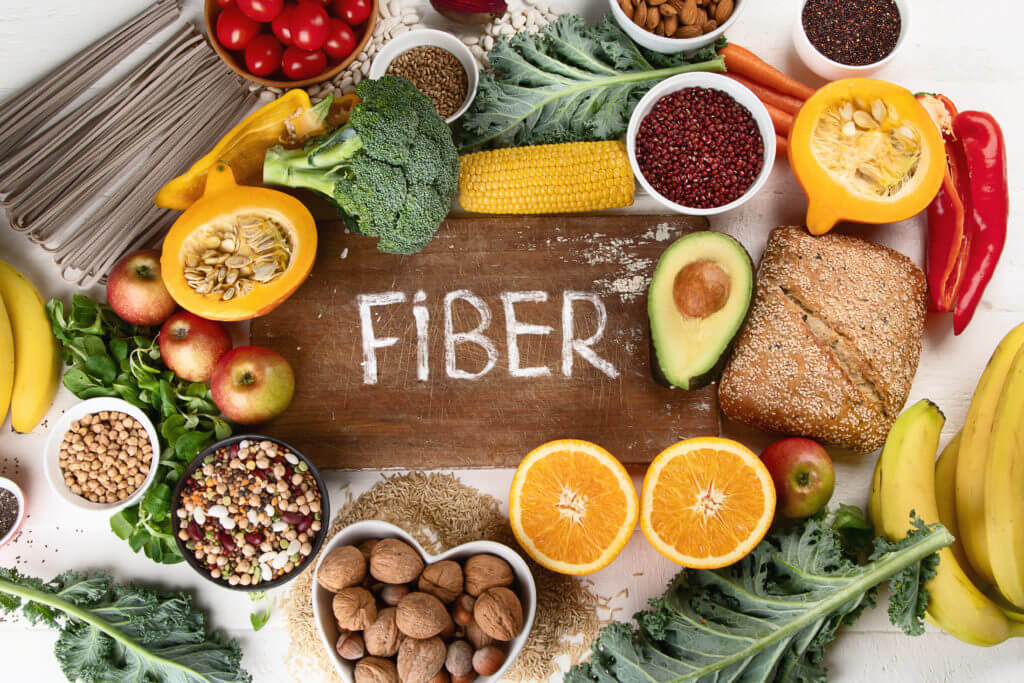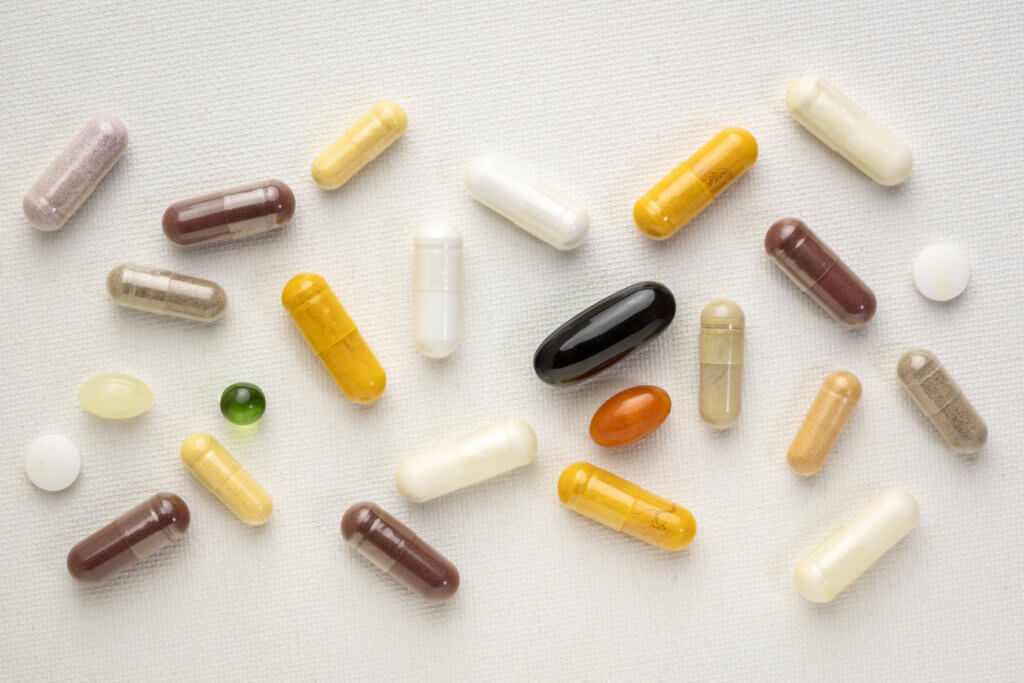By Dr. Mercola
Dietary fiber has been noted as a remarkable nutrient because of the many functions it can perform in your body. Getting the ideal amounts of dietary fiber can help you maintain your weight, improve your blood sugar profile, support your immune system, control gut problems that can cause both hemorrhoids and chronic constipation and even positively impact your brain health.
But new research in the journal Frontiers in Immunology reveals another benefit: Consuming optimal amounts of fiber on a regular basis (pun intended) diminishes inflammation, which is at the heart of numerous bodily dysfunctions.
Researchers from the University of Illinois (U of I) showed dietary fiber may help delay what many people, both medical experts and the general public, believe to be inevitable: the decline not only of motor function but of cognitive health. NEWS.am reports:
“As mammals age, immune cells in the brain, known as microglia, become chronically inflamed. In this state, they produce chemicals known to impair cognitive and motor function. That’s one explanation for why memory fades and other brain functions decline during old age … But, according to a new study from the University of Illinois, there may be a remedy to delay the inevitable: dietary fiber.”1
Not only does dietary fiber promote beneficial bacteria in your gut but, when digested, the bacteria produce short-chain fatty acids (SCFAs). One of these byproducts is butyrate, which Rodney Johnson, head of the department of animal sciences at U of I, explains reduces inflammation in the microglia.
The drug form, known as sodium butyrate, improved memory in mice in other studies, but until the featured study2 it wasn’t clear how.
MedicalNewsToday3 explains that microglia are a major type of immune cell in your brain that, as you age, can become hyperactive and chronically inflamed. This is likely one culpable factor in the decline of memory and cognitive function in older people. Significantly, microglia are said to account for about 15 percent of all the cells in your brain.
In old mice (aged 22 to 25 months versus young mice at 3 to 6 months), butyrate inhibits harmful chemicals from being produced by inflamed microglia. One chemical in particular — interleukin-1β — had been linked to Alzheimer’s disease. Forbes called the discovery a “chemical cascade” for lowered brain inflammation.4
Researchers conducted the study to determine whether they could produce the same inhibitory effect by giving the mice fiber. In this way, they could make the most of the natural “gut” conversion of fiber into butyrate without people having to eat it, as sodium butyrate, Johnson says, has a “noxious odor.”
‘Diet Has a Major Influence On the Function of Gut Microbes’
While your diet has a major influence on both the composition and function of the microbes in your gut, scientists point out that when you eat a lot of fiber, it benefits the good bacteria, while diets containing high amounts of unhealthy fat and protein can take the composition and function of those bacteria in the wrong direction; it has a negative influence, says Jeff Woods, a professor in the department of kinesiology and community health at U of I and coauthor of the study.
While the scientists supposed that butyrate from fiber would affect brain health in the same way as the drug form (sodium butyrate), it hadn’t been clinically proven. Their hypothesis was tested by feeding both low- and high-fiber foods to young and old mice, then measuring the amount of butyrate and other SCFAs in their blood, also keeping track of inflammatory chemicals in their intestines. Johnson notes:
“The high-fiber diet elevated butyrate and other SCFAs in the blood both for young and old mice. But only the old mice showed intestinal inflammation on the low-fiber diet. It’s interesting that young adults didn’t have that inflammatory response on the same diet. It clearly highlights the vulnerability of being old.”5
Interestingly, the intestinal inflammation in the mice eating the high-fiber diet was dramatically reduced, and in fact was demonstrably on par with those of the younger mice, prompting Johnson to conclude, “Dietary fiber can really manipulate the inflammatory environment in the gut.”6
Even more significantly, evidence that dietary fiber also impacts brain inflammation was found when the researchers scrutinized about 50 unique genes in microglia and confirmed that the high-fiber diet reduced levels of brain inflammation in the older mice. Further, eating high amounts of fiber reduced the intestinal inflammation of aging mice so much that it looked no different from that of young mice.
Although the researchers didn’t look at how different amounts of fiber affect “cognition and behavior or the precise mechanisms in the gut-brain axis,” Johnson says, the answer to that will be sought through a nearly $2 million grant from the National Institute on Aging, which is part of the National Institutes of Health (NIH).
Johnson says he’s confident that the positive effects found in the brain profiles of mice will easily translate to humans and lists the negatives of humans not getting enough fiber in their everyday diets:
“What you eat matters. We know that older adults consume 40 percent less dietary fiber than is recommended. Not getting enough fiber could have negative consequences for things you don’t even think about, such as connections to brain health and inflammation in general.”7
How Dietary Fiber Consumption Impacts Your Gut
As referenced earlier, one of the easiest and most effective ways to optimize your gut microbiome — not to mention least expensive — is to eat foods that provide plenty of fiber, and include traditionally fermented foods, as well. But one important differentiation is the difference between the three types of fiber:
- Soluble fiber can be easily dissolved in water and attains a gel-like consistency in your large intestine to essentially slow your digestion process and, in the process, slows the rate at which nutrients are utilized and makes you feel fuller longer.
- Insoluble fiber, which stays intact as it moves throughout your colon rather than dissolving, absorbs fluid and byproducts to help “clean out” your colon by being disposed of as waste.
- Digestive-resistant starch is a naturally occurring resistant starch that doesn’t break down as it moves through your digestive tract, so it adds bulk to waste, which moves it through faster, and also serves as a prebiotic.
One way fiber benefits you overall is through its ability to help prevent leaky gut, which Food Integrity Now8 asserts has impacted around 80 percent of the U.S. population. It causes numerous and sometimes seemingly unrelated problems, from brain fog to joint pain; hives to anxiety; irritable bowel syndrome (IBS) to depression.
Leaky gut means things that shouldn’t are allowed to enter your bloodstream (like toxins) while blocking entrance of things that should (like nutrients).
Good and Bad Aspects of Fiber Sources
A high-fiber diet can help lower your risk of premature death from any cause, a serendipitous perk linked to a reduced risk of chronic disease.
Organic whole husk psyllium, chia seeds, sunflower sprouts, mushrooms and fermented veggies are excellent sources of high-quality fiber, but some of the most beneficial day-to-day sources are crucifers like broccoli and cauliflower, root vegetables and tubers such as sweet potatoes (including the peel), jicama and onions.
Pears, stewed prunes, dried figs or dates, raspberries, pumpkin, almonds, apples with the skin intact, bananas and oranges also contain fiber. However, figs, dates, prunes and bananas are examples of foods that should be eaten in moderation due to their high sugar content.
Another way to get the fiber you need is to take organic psyllium husk (the nonorganic option is usually heavily treated with pesticides) in capsule or powder form. That said, it’s important to understand that while a number of different foods supply dietary fiber, not all of them are constructive, especially due to the way many of them are processed in this modern age.
One clue to this truth is that fiber must be unprocessed. Kidney beans, black beans, lima beans, lentils and other legumes also contain lots of dietary fiber, but besides being loaded with carbs, they also contain lectins. Lectins are carbohydrate-binding proteins that attach to specific biological structures that allow them to do harm, as part of a plant’s self-defense mechanism.
They can also cause trouble in humans. Lectins can cause gut problems because they act as damaging “antinutrients” that change the balance of bacteria in your intestines.
In addition, grains are often tapped as a good source of fiber, but grains promote both insulin resistance (which has been identified as a main driver of chronic disease) and leptin resistance (not to be confused with lectins). Leptin is a hormone that helps your body recognize when you’re full. When this ability goes by the wayside, it’s no surprise that it’s associated with obesity and related problems.
Perhaps worse is the problem of glyphosate contamination, a carcinogen and active ingredient in Roundup herbicide that’s been linked to a staggering number of non-Hodgkin lymphoma (NHL) cases.9 NHL is described by Cancer Treatment Centers of America as “cancer that develops in the lymphatic system from cells called lymphocytes, which are a type of white blood cell that helps the body fight infections.”10
How Dietary Fiber Consumption Impacts Your Brain
Quite often, eating plenty of the foods that supply you with fiber is at the heart of maintaining the best working order of many of your body’s most important bodily functions. In fact, one study11 showed you can figure a 10 percent reduced risk for all-cause mortality for every 10 grams of fiber you add to your overall fiber intake.
Your brain health is included in the list of those bodily functions. There have been other studies showing what fiber consumption can do for better brain function.
One study12 in 2015 concluded that the quality of what children eat — specifically their dietary fiber intake — is the hinge that cognitive control and performance hinges on, especially because “[t]he human brain continues to undergo extensive changes in structure and functional connectivity throughout childhood and adolescence.”13
Another study from 2007 indicated that older women who ate at least a half-cup of blueberries or at least one cup of strawberries per week had slower rates of cognitive decline — in some cases by as much as 2.5 years.14 Besides the fiber, researchers believe such benefits as antioxidants and anthocyanidins, which can cross the blood-brain barrier, contribute to the results.
One interesting research project involved the hypothesis that a product of fiber fermentation may be its ability to directly affect the hypothalamus, an area of the brain involved in regulating appetite. In relation to how fiber helps fight obesity, scientists looked at the SCFA acetate, which is plentiful and also circulates throughout your bloodstream. Nature notes:
“The fiber was fermented as usual into acetate, which turned up not only in the gut, but also in the hypothalamus, a part of the brain known to be involved in regulating appetite. There, the researchers found, it was metabolized through the glutamine-glutamate cycle, which is involved in controlling the release of neurotransmitters associated with appetite control.”15
One of the most interesting aspects of all these studies is that your brain is connected to your gut, as well as your immune system. In fact, the interconnectedness between all your most vital function depends on what you eat, and fiber is one of the most crucial nutrients for so many reasons.
How much fiber should you be ingesting each day? I advise an ideal fiber intake of 25 to 50 grams per 1,000 calories consumed daily, with a focus on consuming plenty of fiber-rich foods. However, don’t forget to add water to help it do what it’s designed to do: boost your overall health and well-being.












